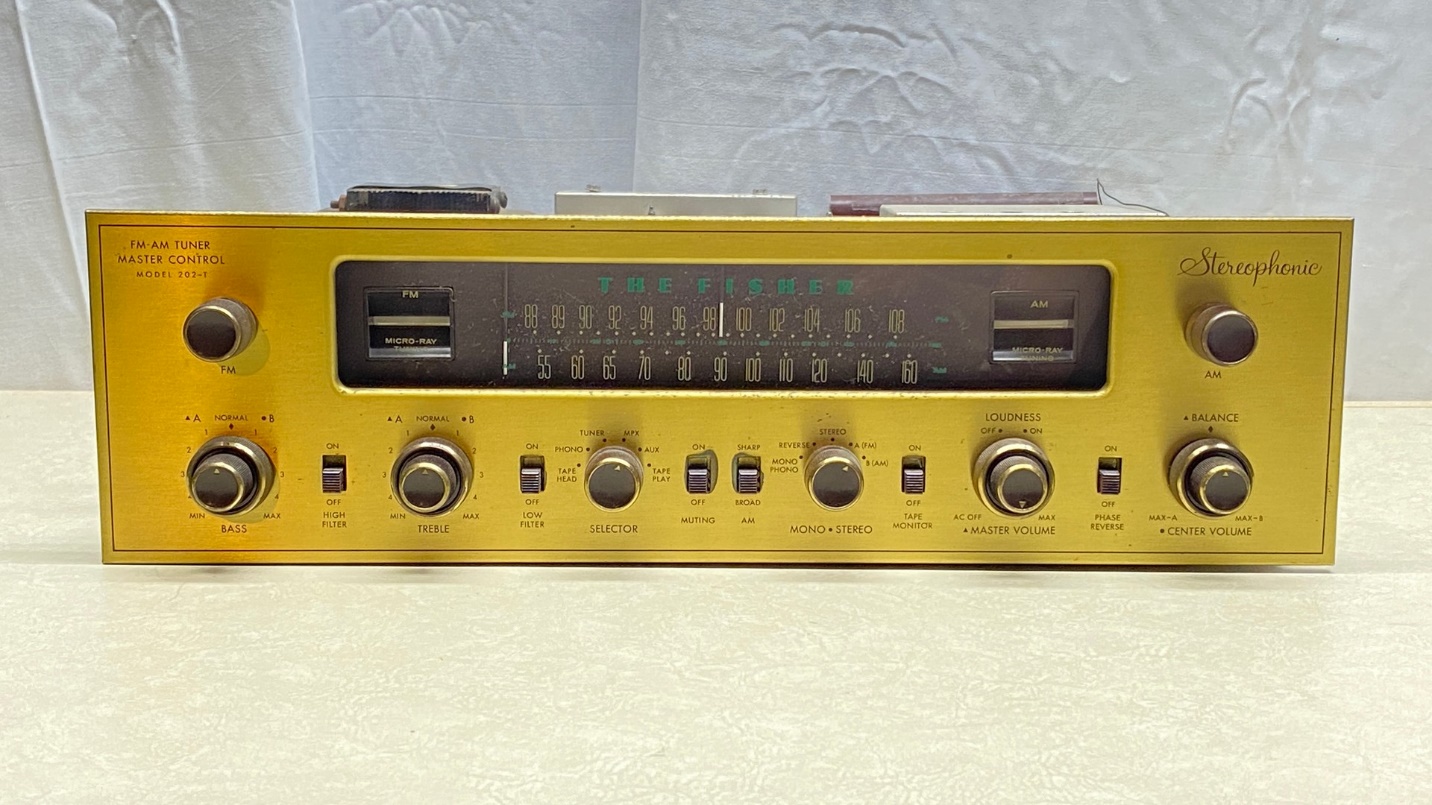
Made in fairly large quantities yet very hard to find today, the Fisher model 202-T tuner-preamplifier is everything one could want in a tuner-preamplifier in 1959. It is essentially a marriage of a Fisher 101-R AM/FM tuner and a 400-C preamp, with some additional bells and whistles that the 101-R and the 400-C did not have, such as:
- A Muting feature which quieted the FM tuner between strong stations.
- A Phase Reverse switch which was useful if listening to simulcast AM-FM stereo signals to ensure both were in phase.
- A Center Channel output with its own individual volume control. A center channel speaker was sometimes used in early stereo setups for all audio frequencies; today, a center channel is often used for subwoofers.
Conversely, the 202-T did not include an equalization control or a rumble filter; the 400-C preamp had both features.
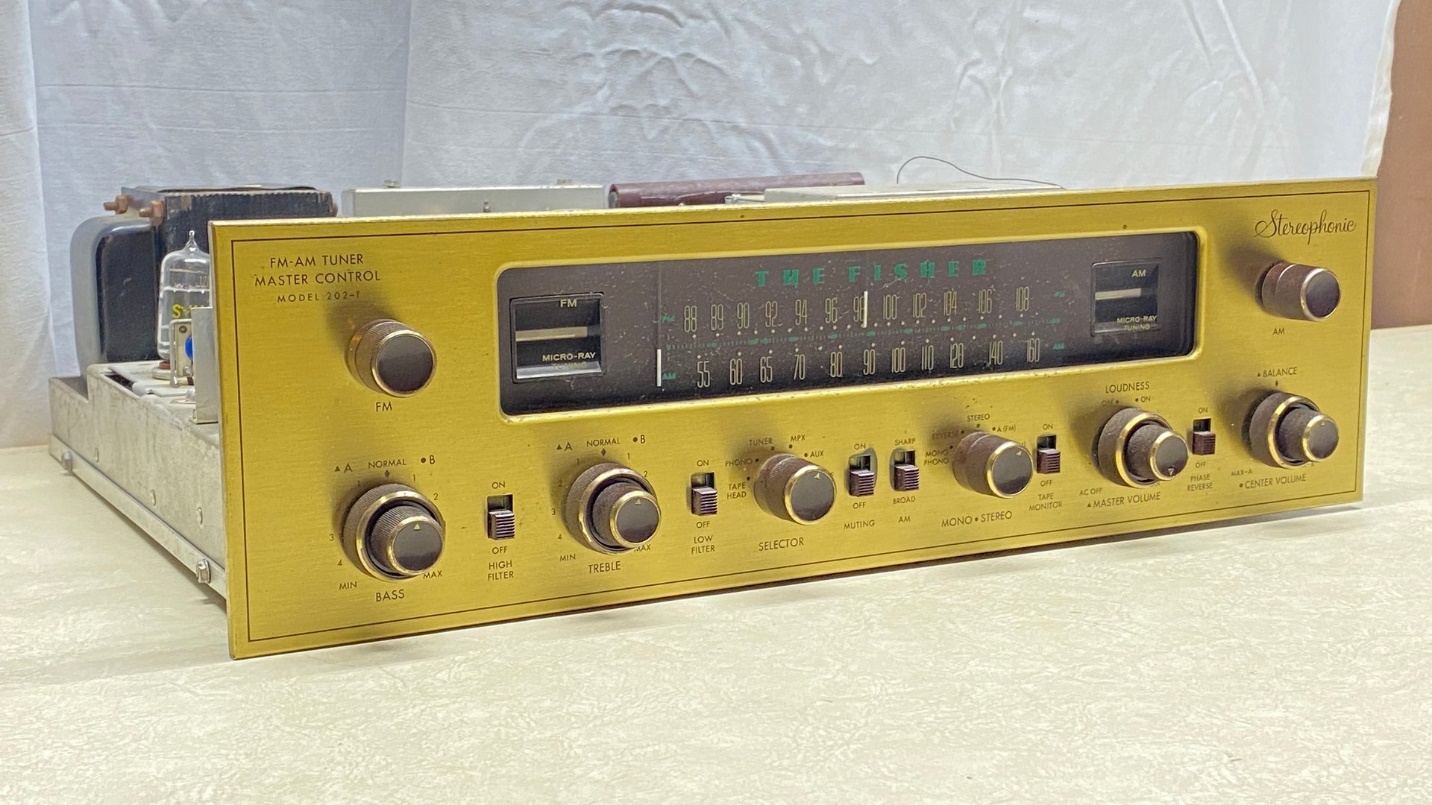
The Fisher model 202-T tuner-preamp, 1959-60.
In all, the 202-T uses 21 tubes and has a provision to add on a Fisher FM multiplex decoder – only the unit was designed to use the MPX-20, a Crosby system decoder which was incompatible with the GE-Zenith system which was eventually adopted by the FCC. With some work, a later Fisher type WX (GE-Zenith) decoder can be made to work in the 202-T; or a solid-state decoder could be easily adapted to this unit.
The Fisher 202-T tuner-preamp is a large unit; it is the same size as the TA-600, TA-800 and 500-S receivers, but does not include a power amplifier section. It greatly resembles the TA-600 in its frontal appearance.
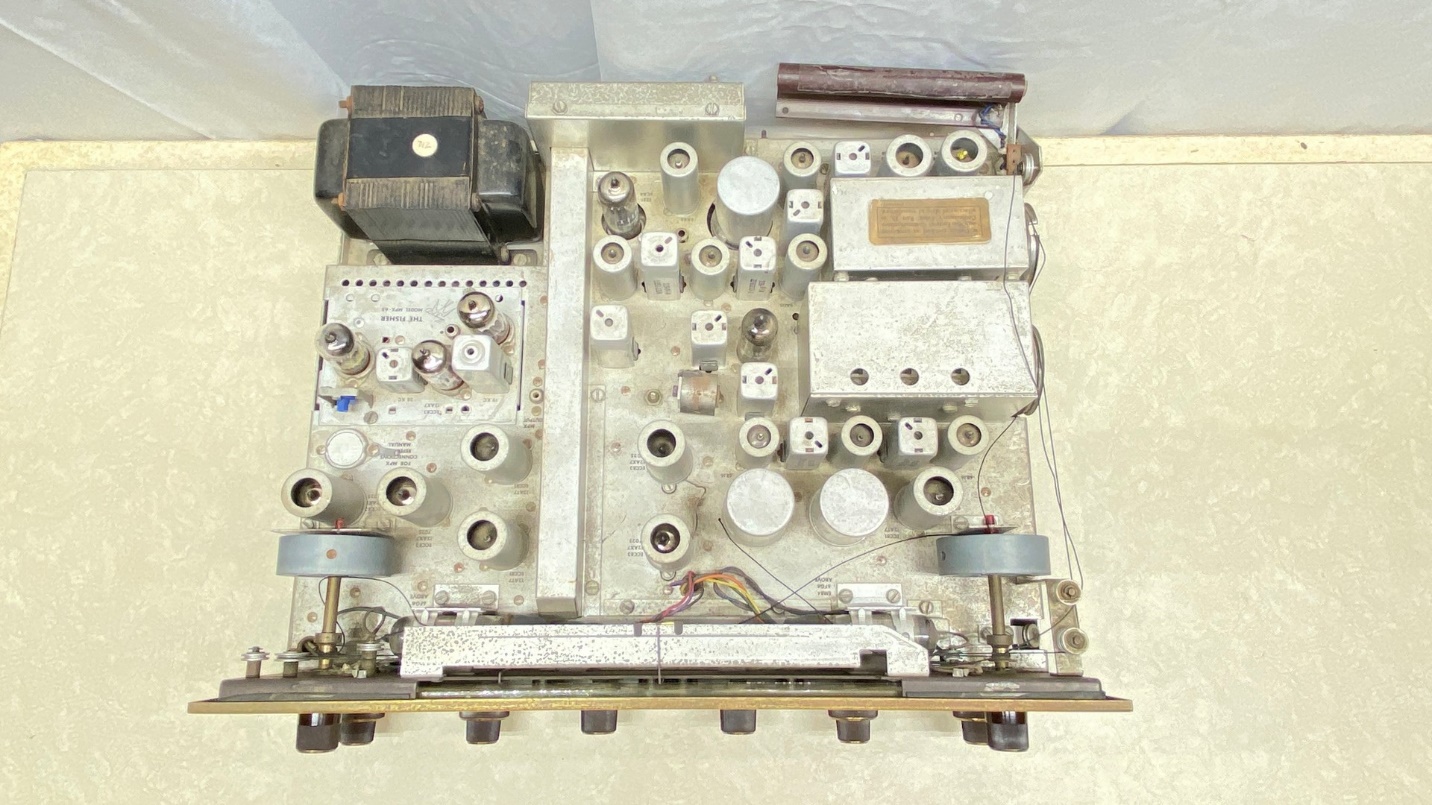
The 202-T as viewed from the top.
The 202-T is hard to find today simply because owners of the 202-T are hanging onto them; I have not seen one for sale on the auction site for a year or more.
As regular readers of this little blog know, your charming and delightful Old Uncle Ron has had a 202-T on his want list for quite some time. I was very fortunate in that, a few weeks before Memorial Day, a fellow audio enthusiast offered to sell his 202-T to me. He had been using it strictly as a preamp; the FM dial string was broken. Someone had adapted a Fisher MPX-65 to this 202-T. Anyway, a deal was made, and this 202-T arrived here on June 1.
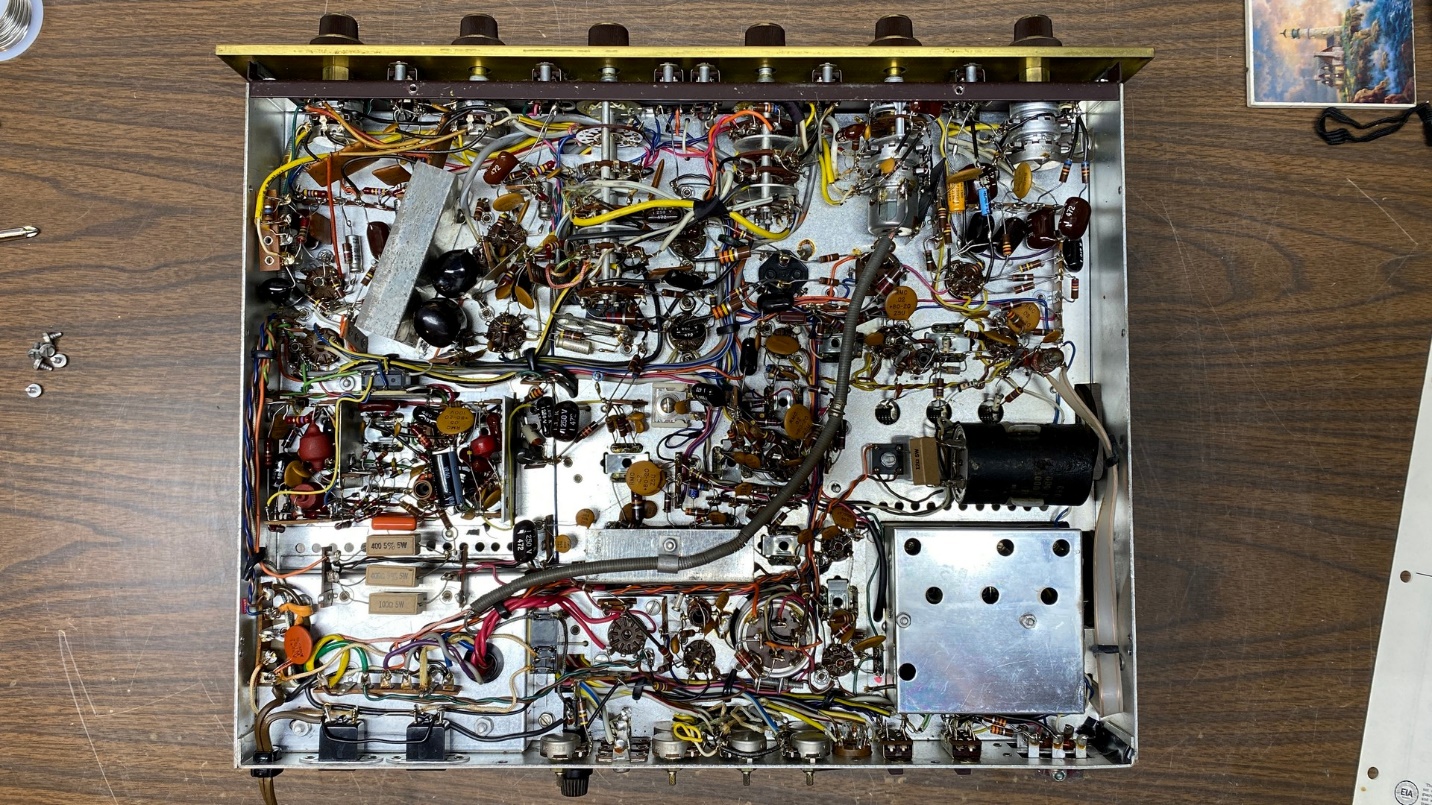
Under-chassis view of the 202-T.
It was packed very well and survived the trip from the Bay Area to southern Indiana just fine. I restrung the FM dial cord the next day and tried it out. Once all 24 tubes warmed up (the MPX-65 adds three tubes to the 202-T’s complement of 21), the typical warm, pleasing Fisher FM sound began to come forth through the solid-state amplifier and the Wharfedale W60 speakers I have at my workbench.
It took a little doing to figure out how to get FM Stereo sound from this unit. I finally found that, by placing the Selector switch in the MPX position and the Mono-Stereo switch in the Stereo position, the unit would play FM Stereo after a brief pause of a half second.
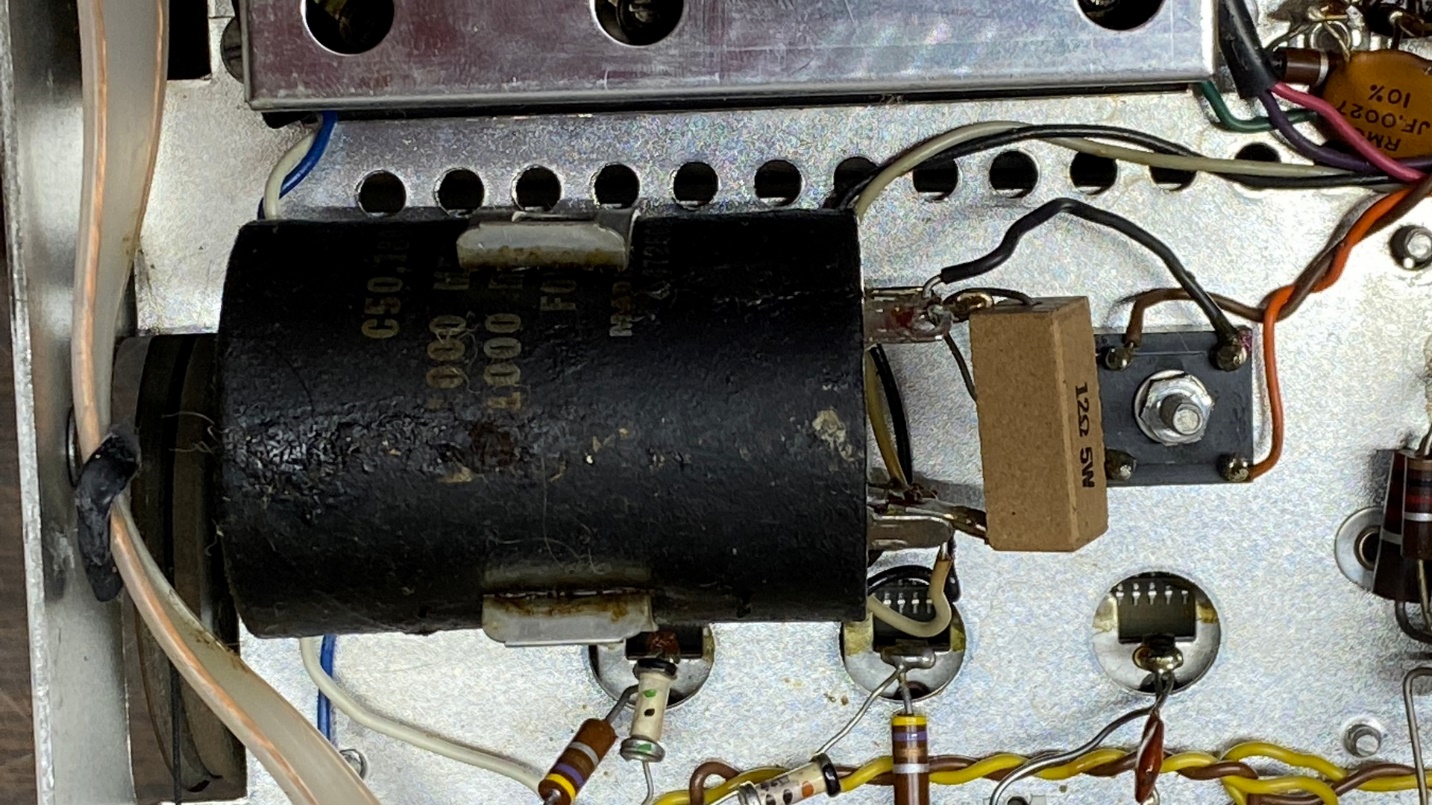
One of the four original electrolytic can capacitors. Note the selenium rectifier was replaced with a silicon unit.
I noted that the Muting control was not working. Everything else seemed to be functioning just fine – and on electrolytic capacitors that appeared to be the originals. Wow. 61-year-old electrolytics that still worked with no noticeable hum. Amazing! Most of the FM IF transformers had date codes which indicated the 12th or 13th week of 1960; therefore, this unit must have been built in Spring 1960, which would have been near the end of production of the 202-T.
Looking under the chassis, I noticed that only a few parts had been replaced, including a few of the individual electrolytics and the AC across-the-line “death” cap, which had been replaced with a ceramic disc replacement, not a safety capacitor. And the death cap was not even soldered in; the wires were only twisted onto the binding post terminals with no solder. All the original brown “dog turd” paper capacitors are still in place.
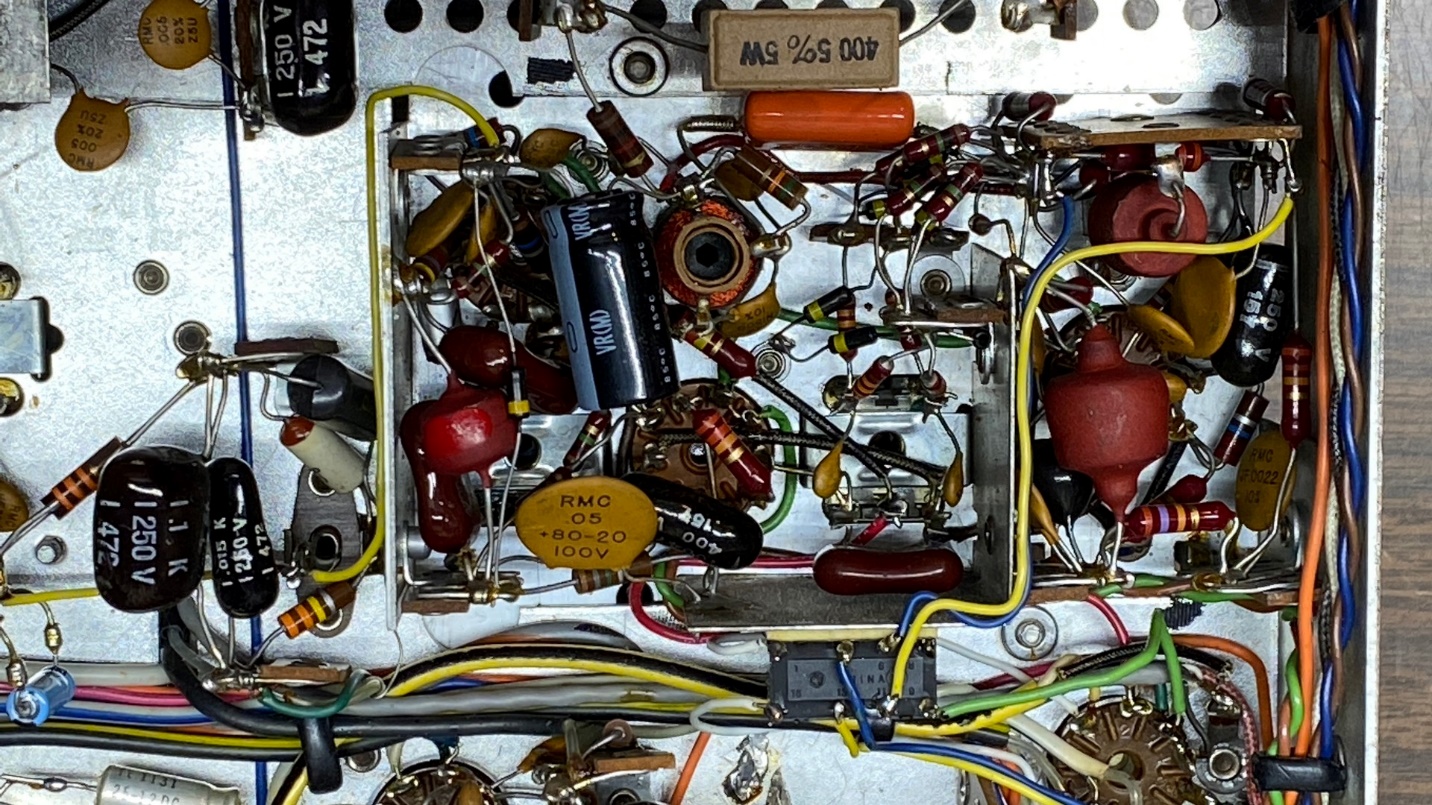
The MPX-65 FM multiplex decoder as viewed from under the chassis.
Eventually, I will do a wholesale replacement of paper and electrolytic capacitors, and the four electrolytic can capacitors will get restuffed with new electrolytics. Even though it is playing well, I do not trust using electrolytics that are as old as I am.
But for now, I am just happy to have completed my Fisher want list and am very happy with this new acquisition. The 202-T is just as great as I had imagined and is a wonderful acquisition for my Fisher collection.